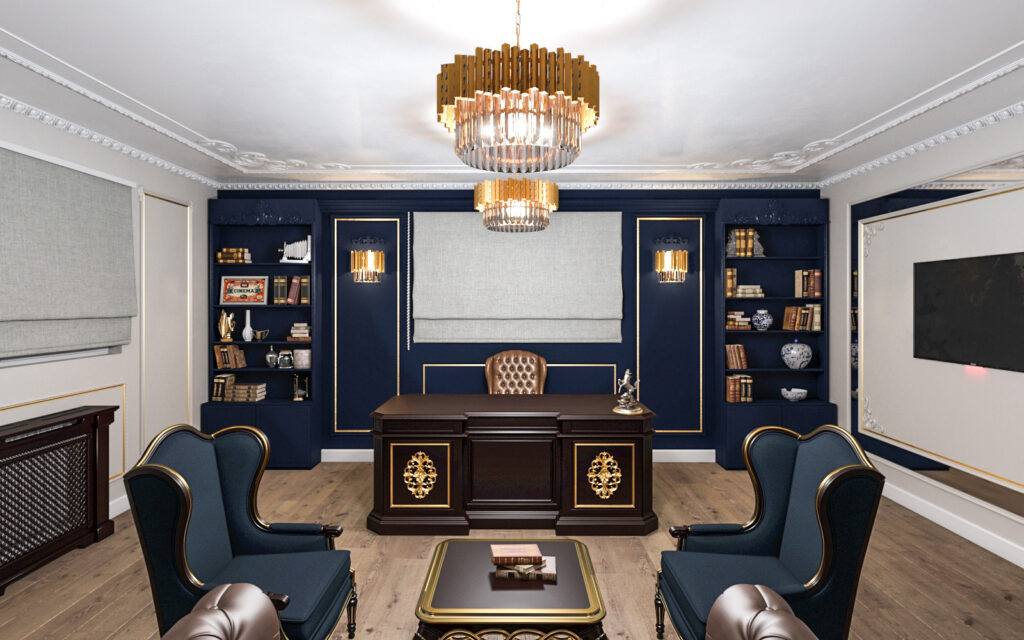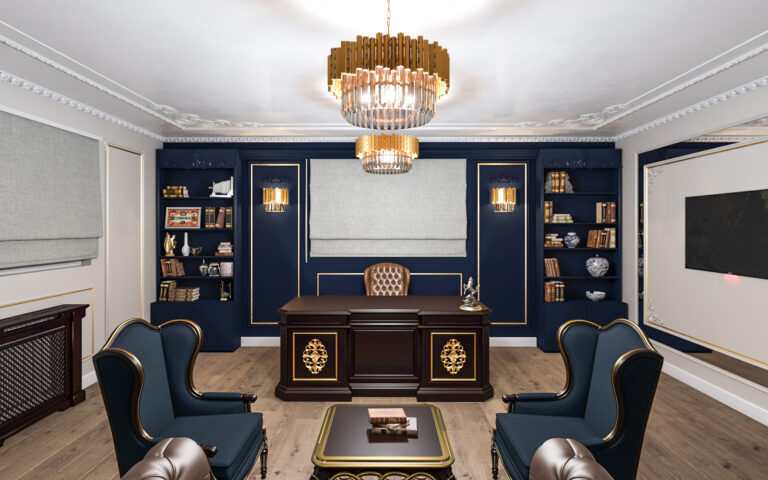
Balance is one of the fundamental principles of interior design that refers to the even distribution of visual elements within a space. Achieving balance in design creates a sense of harmony, tranquility, and cohesion. Below, we explore the types of balance in interior design and methods for achieving it.
1. Types of Balance in Interior Design
1.1 Symmetrical Balance
In this type of balance, objects are arranged symmetrically on either side of an axis. This approach is often seen in formal and classical spaces, where each side of the room mirrors the other.
Characteristics:
- Creates a sense of order and stability
- Identical arrangement of furniture and décor
- Commonly used in formal settings like traditional living rooms
Example: A living room where two identical sofas are placed on either side of a coffee table.
1.2 Asymmetrical Balance
In this method, balance is achieved by using different objects that have equal visual weight. This type of balance is more dynamic and modern than symmetrical balance and is ideal for creative and informal designs.
Characteristics:
- Feels more natural and dynamic
- Greater flexibility in layout
- Combines different elements with similar visual weight
Example: Placing a large sofa on one side and balancing it with two smaller chairs on the other side.
1.3 Radial Balance
This type of balance occurs when interior design elements are arranged around a central focal point in a circular pattern. It is often used in unique spaces like round halls or conference rooms.
Characteristics:
- Creates a strong focal point in the center
- Enhances movement and dynamism in a space
- Often used in artistic and special designs
Example: A round dining table with chairs evenly placed around it.
2. Strategies for Achieving Balance in Interior Design
2.1 Using Colors
Light and dark colors can help create balance. For instance, if dark colors are used on one side of the room, incorporating lighter elements on the other side can restore equilibrium.
2.2 Adjusting the Visual Weight of Furniture
Every object has a specific visual weight. A large sofa or a heavy bookshelf has more visual weight. Balancing such elements with smaller items in greater numbers can maintain visual harmony.
2.3 Proper Lighting
Lighting is a crucial factor in visual balance. Adequate lighting distributed evenly across different areas of a room enhances balance and cohesion. Accent lighting in key spots helps establish proper visual weight.
2.4 Combining Materials and Textures
Mixing different materials such as wood, metal, glass, and fabrics contributes to balance. For instance, if heavy wooden furniture is used, incorporating softer textiles can create a more harmonious look.
Conclusion
Balance in interior design helps create a comfortable and harmonious space. Choosing between symmetrical, asymmetrical, or radial balance significantly impacts the overall feel of a room. By carefully selecting colors, furniture, lighting, and materials, you can achieve a well-balanced and visually appealing environment.


No comments yet.